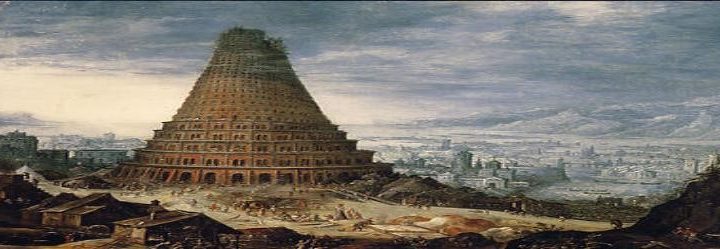The Hidden Color of our Creator – Tekhelet
#TINK (Things I Never Knew)
I never knew God created a certain color of blue to represent Him and His Holiness.
***This is amazing. Get this in your Spirit. There is a specific blue color ordained by Yahweh Himself. The source of this color was lost and outlawed and has only recently been rediscovered and produced.***
In scripture, a certain shade of blue is mentioned. It appears in the books of Exodus and Ezekiel in descriptions of God’s throne and footstool and is described as sapphire stone or lapis lazuli.

“There they saw the God of Israel. Under his feet there seemed to be a surface of brilliant blue (sapphire) lapis lazuli, as clear as the sky itself.” Exodus 24:10

This same shade of blue was to be used in the robe of the High Priest: recorded as “pure blue,”
“Make [Aaron’s} robe that is worn with the ephod from a single piece of blue cloth – tekhelet.” Exodus 28:31
In addition, every Israelite was commanded to place a blue (tekhelet) thread in the tassels (tzitzit) in the corners of their garments.
“Speak to the Israelites and tell them that throughout the generations to come they are to make for themselves tassels for the corners of their garments, with a blue (tekhelet) cord on each tassel. When you see the tassels, you will remember and obey all the commands of the LORD instead of following your own desires and defiling yourselves, as you are prone to do.” Numbers 15:38-39

In the Old Testament, a blue tekhelet thread was knotted among white ones, as described to Moses. (Numbers 15:38) To fulfill the commandment of tzitzit, Jewish men throughout the ages have worn a short, four cornered wool or cotton shift with fringes attached to each of its corners. At given times during prayer, or at any time, a man holds the tsitsit up and looks at it, to remind himself that his actions should be imbued with holiness. This distinctive blue thread was the reminder.” This blue, reflects the color of the heavens and reminds one of God’s heavenly throne. Regarding it keeps one’s thoughts focused on holiness. Over time, this four cornered garment, known as a tallit, came to include the large blue stripes in the fabric as well as the tassels on the corners. (Recall these tassels are what the woman with the issue of blood touched when she touched the hem of Jesus/Yeshua’s garment. See post) These stripes of tekhelet blue inspired the design of the flag of Israel. The flag is basically a large Jewish Tallit or prayer shawl.

In ancient Mesopotamia, there was no word for the color blue in either Sumerian or Akkadian. Hence, Sumerian uqnû, the word for the precious blue gem lapis lazuli, was adopted to mean lapis lazuli-colored, i.e., blue and all its various shades. This term was apparently applied to the sky, and later to blue wool (uqnâtu). When the foreign word takiltu (Hebrew, tekhelet) was adopted into Akkadian, it was rendered with the same cuneiform signs as uqnâtu. This suggests that to Mesopotamian eyes, the colors of lapis lazuli, the sky and tekhelet were equivalent.

Tekhelet was an expensive dye, obtained through a labor-intensive, long-drawn-out hand process that yielded the blue coveted by Jews and Gentiles alike. Fabrics dyed this way, created the tekhelet blue along with purple and crimson and were as valuable as gold. The dye is so color fast that it was said to never fade, which only added to its value.

Where did they get this blue dye? The inhabitants of the ancient Mediterranean found a way to extract luxurious, fade-resistant pigment from the body of murex snails. According to the Greek historians, Cyrus king of Persia introduced purple garments to the royal wardrobe. The same mode of dress was later adopted by the Hellenistic kings and the Roman Caesars. Purple was considered the most prestigious dye in the Roman world, but Jewish sources attributed a greater importance to the tekhelet blue. In the descriptions of the Tabernacle and its utensils in the book of Exodus, tekhelet always appears before argaman (purple). Over 45 times this blue is used in the tabernacle and the garments and listed as tekhelet and argaman, blue and purple.
Fast forward to the time of the Jews in captivity and the subsequent Roman and Greek rulers. “Ancient Roman and Greek ruling classes adopted sumptuary laws to enforce privilege and social distinction, making it illegal for anyone but themselves to wear blue, purple, or crimson clothes. The Roman governments eventually monopolized the dyeing industry. Jews were consequently forbidden to produce tekhelet. The Muslim conquest of Israel in the 7th century brought new prohibitions against the manufacturing of tekhelet. As the Jewish dyeing houses closed, the secret to making tekhelet was lost.”
The Roman rulers such as Caesar and Augustus restricted the use of the Murex dye to the governing class. Nero made laws that stated no one was allowed to wear blue/purple because it was the color of royalty, and specifically he forbade goods from the Purpura, the name used for the Murex trunculus in ancient times, and he decreed that anyone who wore it would be put to death. Rabbis were caught by troops while trying to smuggle in tekhelet to make their blue and purple dyes. Tekhelet was worn only by the royalty and outlawed for other people.

At some point following the Roman destruction of the Second Temple, the actual identity of the source of the dye was lost. During this period of over 1,400 years, most Jews have only worn plain white tassels, because the original blue could not be found (Tzitzit).[14] Ḥillazon).
Today, the quest for the heavenly blue leads us to the depths of the sea where we encounter an enigmatic creature – the source of the most brilliant and prestigious of colors of Ezekiel 10:1 and Ezekiel 1:26-28 “Near Tyre, archaeologists have found large mounds of snail shell remains, indicating where local dyeing industries flourished in Biblical times. Recall the woman named Lydia, from the city of Thyatira, a seller of purple goods (Acts 16:14). Remains of the tekhelet snail have also been found on Mt. Zion, Jerusalem, indicating an ancient dyeing industry there.” A recent archeological display called Out of the Blue displays two-thousand-year-old tekhelet and argaman dyed fragments of textiles found in the caves of the Judean Desert and Masada.
Amazingly, the heavenly blue has been hidden in plain sight all these hundreds of years.

What has been discovered is that Strongs 713 argaman purple and 8504 tekhelet blue are from the same source: this Murex trunculus snail.
In the 1980s, Otto Elsner,a chemist from the Shenkar College of Fibers in Israel, discovered that if a solution of the dye was exposed to ultraviolet rays, such as from sunlight, blue instead of purple was consistently produced. During a specific stage in the dyeing process, exposure to ultraviolet rays (such as those found in sunlight) can cause the molecules that give the dye its natural purple color to transform into pure indigo, thus leaving the dye an unadulterated sky-blue.
Allow me to sum this up. Tekhelet and argaman (blue and purple) were extracted from the same marine animal. The tyrannic royal rulers outlawed the process of the Jews creating tekhelet blue dye for the tabernacle, tzitzits, and priestly garments. The precious heavenly blue dye process was hidden and horded by ungodly self-important rulers throughout the ages. It was only recently discovered that the source of the blue and purple dye was identical. One color, the earthly king color of purple is harvested in darkness. The heavenly blue color appointed by The Creator can only be achieved when the source is harvested in the sunlight.

“For everything that is hidden will eventually be brought into the open, and every secret will be brought to light.” Mark 4:22
“Therefore judge nothing before the appointed time; wait until the Lord comes. He will bring to light what is hidden in darkness and will expose the motives of the heart. At that time each will receive their praise from God.” I Corinthians 4:5
Over the past 25 years, companies have produced hundreds of thousands of murex-dyed tekhelet blue tzitzit strings that hang from prayer shawls around the world, reminding those who wear them of the sea, the sky and God’s holy throne, and His commandments.

“And they clothed him with purple, and platted a crown of thorns, and put it about his head, And began to salute him, Hail, King of the Jews!” Mark 15:17-18
Recall that they put a purple robe of Jesus/Yeshua and mocked Him. They were making fun of His claim of King of the Jews by clothing Him in the color reserved for royalty. Little did they know. He will return as King and a roaring lion. I wonder what color His robe will be in the Kingdom?
Additional Cited Information:
Additionally, the opercula opening of this Murex shellfish were used to make the onycha ingredient of the Holy anointing oil (Exod. 30: 34). What an amazing creature this snail is!
“And the LORD said to Moses, Take to you sweet spices, stacte, and onycha, and galbanum; these sweet spices with pure frankincense: of each shall there be a like weight:” Exodus 30:34
The word porforin, or porpora, or porphoros is used in midrash as well as many other Jewish texts to refer to the Ḥillazon that we get tekhelet from and this is the Latin or Greek[40] translation of Murex trunculus. Pliny and Aristotle also both refer to the Porpura as being the source for purple and blue dyes, showing that the Murex has a long history of being used for blue dye.[19] With the decline of the blue and purple dye industry, the skill required to produce these dyes was lost and forgotten for centuries. In recent generations, interest in the colors has revived after researchers traced the source of both tekhelet and argaman to murex snails indigenous to the Mediterranean Sea.

According to Zvi Koren, a professor of chemistry, Tekhelet was close in color to midnight blue.[27] This conclusion was reached based on the chemical analysis of a 2000-year old patch of dyed fabric recovered from Masada in the 1960s. the Israel Antiquities Authority verified a 1st-century CE-dated fragment of blue-dyed fabric to have used H. trunculus as the source of its pure blue color.[29]
In the Septuagint, tekhelet was translated into Greek as hyakinthos (ὑακίνθος, “hyacinth”). The color of the hyacinth flower ranges from violet blue to a bluish purple. The dye is extracted from the hypobranchial gland of these snails.
How it was disovered: Isaac Herzog, who years later became the first chief rabbi of Israel, corresponded with the greatest dye chemist of his day, Paul Friedländer, about possible sources for Biblical tekhelet. Archaeological evidence and an exhaustive survey of the writings of rabbinic scholars and Greek and Roman naturalists had convinced Herzog that tekhelet was a bright sky-blue obtained from the natural secretions of a certain sea snail, the Murex trunculus, known to produce a dark purple dye.* But the esteemed chemist challenged Herzog’s contention: “I consider it impossible to produce a pure blue from the purple snails that are known to me,” Friedländer said emphatically.1 Unfortunately, neither Herzog nor Friedländer lived to see a 1985 experiment by Otto Elsner, a chemist with the Shenkar College of Fibers in Israel, proving that sky-blue could, in fact, be produced from murex dye.
first-identification-of-authentic-tekelet.pdf (tekhelet.info)
Home – Tekhelet Foundation – תכלת
Biblical Blue Confirmed in Jerusalem – Simcha Jacobovici TV (simchajtv.com)







Thought. Blue is also known as a ‘pure’ color as it is one of the four primary colors. However purple is a secondary color; being a mix of blue and red. It is not pure. Blue, has to be tainted with red, in order to produce the color of purple. So much analogy can be gleaned from the dying process alone, then the purity of the colors (primary vs secondary) and then what the colors represent (blue representing the sky, red representing blood, etc…).